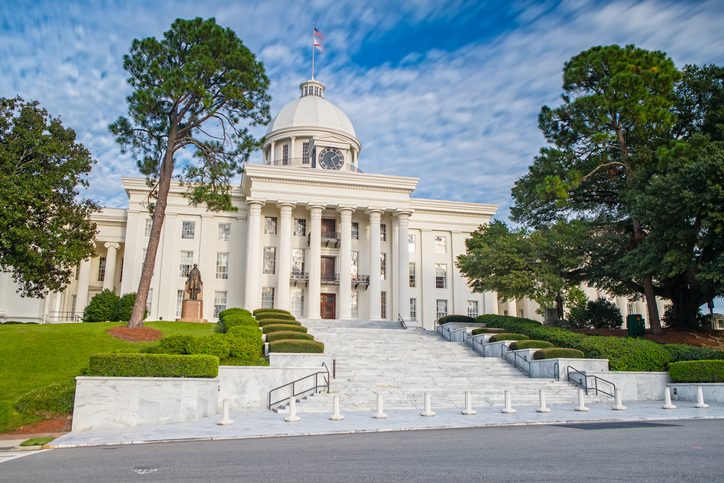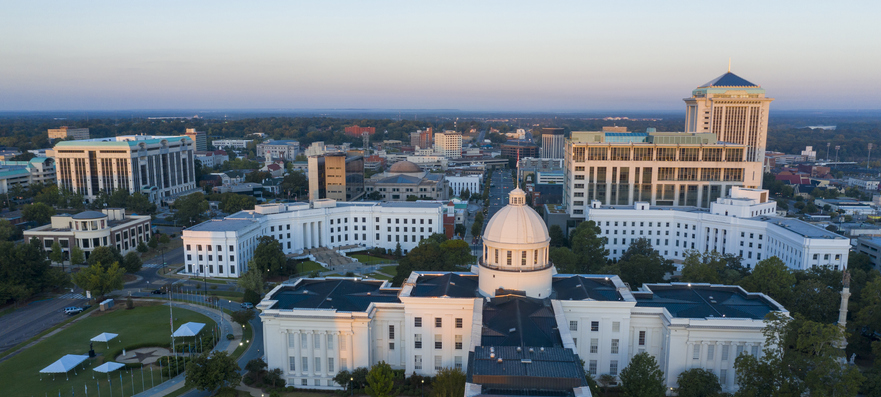Alabama Gets New Majority-Black Voting District
Alabama Gets Majority-Black Voting District After New Congressional Map Approved

Source: Susanne Neumann / Getty
UPDATED: 3:30 p.m. ET, Oct. 5
Alabama residents are finally getting a second majority-Black voting district, giving voters of the new district a better opportunity to elect a representative of their choice.
On Thursday, a federal court approved a new congressional map in the southeastern portion of the state with a 48.7% Black voting-age population, which gives greater representation to Black voters.
Before the new district was approved, Black Alabamians, who make up 27% of the state’s population, were only represented in one of the state’s seven congressional districts.
The court weighed on three proposed plans for new congressional maps created by Richard Allen, a court-appointed special master, to be used in the 2024 elections.
The Alabama attorney general’s office pushed back against all three proposals, but justices rejected the state’s emergency request to keep Republican-drawn lines, which was also rejected by a lower court over the summer.
In June, a three-judge panel ruled that the state’s plan with one majority-Black district out of seven violated the U.S. Voting Rights Act.
Last week, an Alabama court-appointed special master submitted proposals for congressional districts that would create greater representation for Black voters.
According to AP, court-appointed special master Richard Allen wrote and submitted three proposals that would create a second majority-Black district in Alabama. The proposals follow the court’s direct instruction to give Black voters in the state an ample opportunity to elect a candidate who represents them, something Alabama Republicans failed to do numerous times over the summer.
The proposals specifically plan to change the boundaries of Congressional District 2, giving Black voters between 48.5% to 50.1% of the voting-age population. The GOP redistricting plan only raised the Black voting-age population to 39.9%, which did not give Black voters anything close to a majority.
“The proposals show a serious consideration of the need to remedy the violation found by the court,” said Kareem Crayton, a redistricting expert at the Brennan Center for Justice at New York University School of Law.
“There will be more to review as we get access to the block files supporting these recommended maps, but what’s clear is that the Special Master did what the state had to date simply refused to do: take the directives of the local court seriously. Each proposal appears to create two districts that are either majority Black or close to it.”
Allen, who is a former chief deputy for several previous Republican Alabama attorney generals, said his proposals were not drawn based on race, but rather give Black voters “an opportunity to elect a representative of their choice.”
“A performance analysis in this case should demonstrate that the Black-preferred candidate often would win an election in the subject district,” Allen wrote.

Source: ChrisBoswell / Getty
In July, Alabama Republicans rejected instructions from the U.S. Supreme Court to redraw congressional districts and create a second majority-Black district in the state.
Instead, Alabama lawmakers proposed a redistricting map that would barely increase the percentage of Black voters in the 2nd Congressional District, testing the court’s directive of creating an entirely new district.
The instruction the panel of judges gave Alabama legislators was simple: Create a second Black congressional district “or an additional district in which Black voters otherwise have an opportunity to elect a representative of their choice.” Instead, Republicans in Alabama, which has seven congressional districts in all, maintained the Black district it already had and increased the number of Black voters in another district from 30% to 40%.
In September, federal judges blocked the Republican lawmakers’ proposed map, opting to draft its own using a court-appointed special master.
“We are not aware of any other case in which a state legislature—faced with a federal court order declaring that its electoral plan unlawfully dilutes minority votes and requiring a plan that provides an additional opportunity district—responded with a plan that the state concedes does not provide that district,” the judges wrote. “The law requires the creation of an additional district that affords Black Alabamians, like everyone else, a fair and reasonable opportunity to elect candidates of their choice. The 2023 Plan plainly fails to do so.”
According to Data USA, Black residents make up 26% of Alabama’s population but only makeup 12% of the U.S. population.
SEE ALSO:
Judges Reject Alabama’s Congressional Map, Which They Said Needs To Be Less Racist
Alabama Redistricting Case: We Must Be Clear-Eyed About Where We Are And Where We Go From Here



















